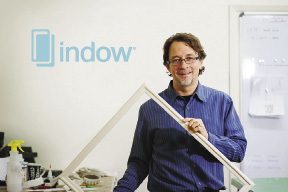An ailing smartphone? People expect them to work a certain way and promptly fix them if they don't. Cleantech start-ups want people to approach drafty, inefficient commercial buildings that way too. Until now Congress has done little to make the built environment more energy efficient even though commercial and residential buildings use 41% of energy in the U.S. Cleantech startups have been working to fill this vacuum, attracting experts from missile defense to semiconductor chip manufacturers as energy efficiency's star rises. It's power there for the taking. No drilling or fracking required. Just think: so far, 14 cities and one county have enacted public energy rating policies - building energy reporting and disclosure ordinance (BERDO) - so people can have a better handle on the energy use of their buildings and know how much it costs to run them.
"You can't manage what you haven't measured," said Carolyn Sarno Goldthwaite, a senior program manager for Northeast Energy Efficiency Partnerships. "You can't monetize what you haven't measured."
There is money to be saved and made: Studies have shown that energy-efficient buildings rent for $1-3 more per s/f.
"Commercial property owners are beginning to understand that finely-tuned energy efficient buildings are going to pay big dividends going forward, not just in utility savings, but in creating comfortable environments for employees and commanding a premium on rents," said Sam Pardue, CEO of Indow, a startup that won the national Energy Efficiency Award at the CleanTech Open in 2011. Before embarking on any energy efficiency upgrades, NEEP recommends property owners first go to their local utility administrators who offer incentives on items such as lighting and HVAC upgrades. In addition, Goldthwaite recommends ensuring your facility managers have the proper training and certification to run today's increasingly smart buildings. But Pardue said they would also be wise to keep abreast of cleantech startups, which are exploding with innovations to dial in a building's energy efficiency:
* Pardue, formerly of Intel, invented a simple window insert that's making it possible for building owners who don't want to pay for window replacement or damage a building's historic character, to dramatically increase their facility's energy efficiency. Indow inserts are edged in patented silicone compression tube and press into window frames, allowing companies and homeowners to keep their existing windows while saving on energy.
* A U.S. Department of Energy study found that installing Indow inserts led to a more than 20% reduction in heating, ventilating and air-conditioning use in a Seattle home.
* Dipul Patel was working on radar systems at Lockheed Martin when his mother visited and spent the night in a freezing guest room because Patel had closed the vents to save energy and forgot to open them. He realized buildings should have motorized vents that open and close and helped found Ecovent based in Cambridge, Mass., which uses an app paired with sensors and vents to reduce the amount of energy wasted heating and cooling rooms that don't need to be.
* The idea for Lucid began at Oberlin College on the premise that people have gotten disconnected from their energy use because there's no longer a diminishing woodpile out back. Its BuildingOS connects all the systems - water, HVAC, lighting - in a building to one platform so a facility manager can monitor in real time energy usage. One client slashed its energy use by 27%, saving more than $90,000.
"Commercial buildings consume two-thirds of the world's electricity," said Loreal Lynch, vice president of marketing for Lucid. "There's a huge opportunity to create more efficiency to optimize how commercial buildings are run around the world."
Tags:
Cleantech start-ups approach to drafty, inefficient commercial windows - Indow won Energy Efficiency Award at CleanTech Open
July 02, 2015 - Owners Developers & Managers
 (1).png)








